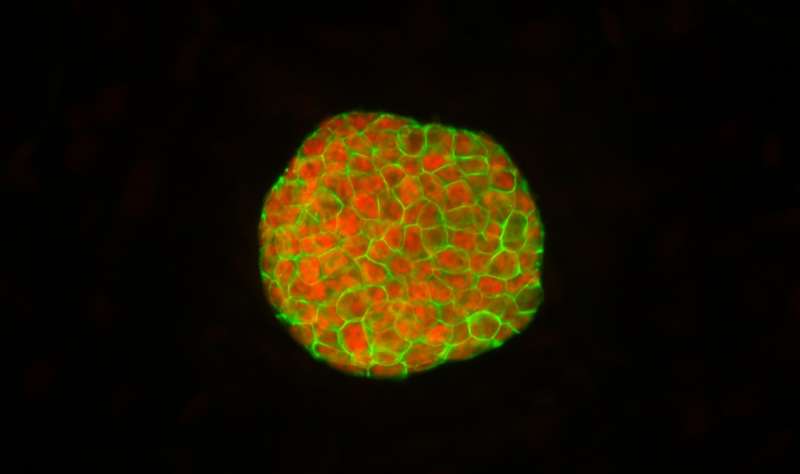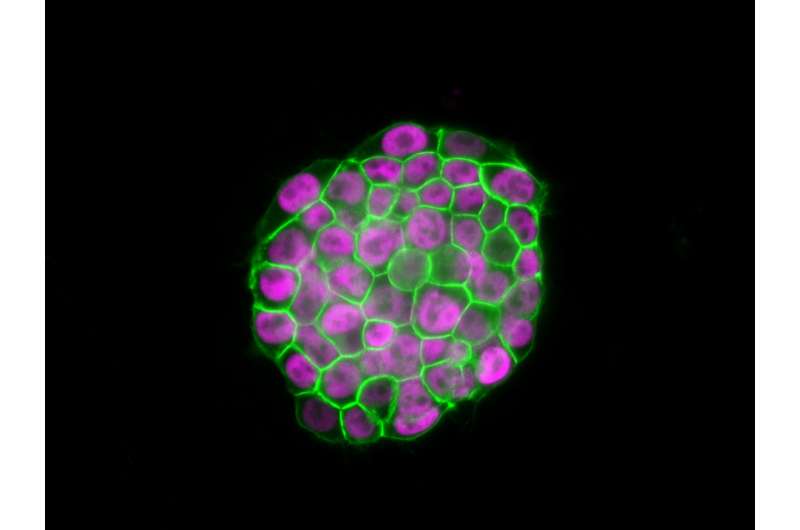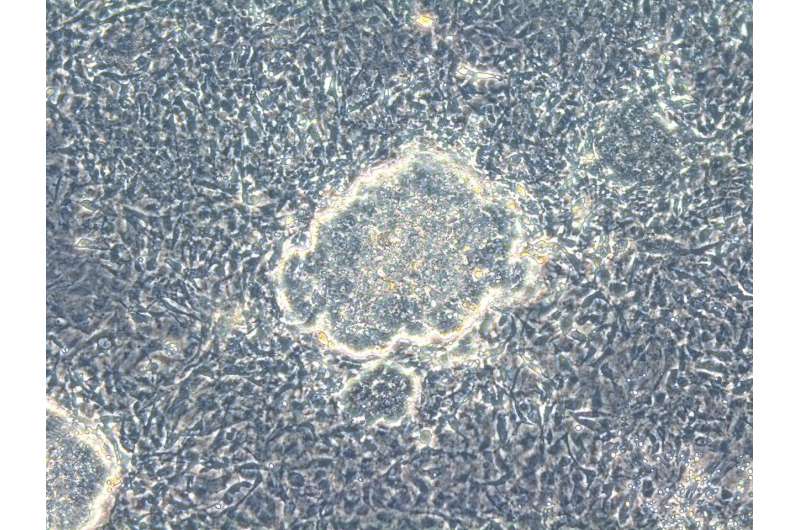Why male and female cells behave differently after being reprogrammed into stem cells

Vincent Pasque from KU Leuven, Belgium, and Kathrin Plath from UCLA led an international study into how specialized cells are reprogrammed to induced pluripotent stem cells (iPS). The researchers discovered that female and male cells behave differently after the reprogramming process and that this is due to their different number of X chromosomes.
Thanks to a promising technique known as cell reprogramming, a patient's skin cells could be used, for example, to restore vision in the future. The technique allows scientists to make stem cells from a patient's own cells. These stem cells—known as induced pluripotent stem cells, or iPS cells—can become almost any specialised cell type of the human body, including the cells we need to see.
Working with iPS cells has numerous advantages compared with other methods. For one thing, adult cells can be used to make iPS cells, so researchers do not require embryos. Furthermore, the reprogrammed cells have the patient's DNA, so their body will be less likely to reject them.
"Cell reprogramming is revolutionising medicine, yet surprisingly little is known about how it actually works," says stem cell expert Vincent Pasque, assistant professor at KU Leuven, Belgium.
Together with Kathrin Plath from UCLA, Vincent Pasque from KU Leuven led an international study into how adult cells are reprogrammed to iPS cells. To investigate the different stages of the reprogramming process, the researchers separated male and female cells to examine them side by side. The researchers discovered that female and male cells behave differently after the reprogramming process due to their different number of X chromosomes—two in female cells and one in male cells.
Vincent Pasque explains: "In a normal situation, one of the two X chromosomes in female cells is inactive. But when these cells are reprogrammed into iPS cells, the inactive X becomes active. So the female iPS cells now have two active X chromosomes, while males have only one. We now know that this explains the different behaviour of male and female cells after reprogramming because, over time, female cells lose one of the two X chromosomes and start behaving more or less like male iPS cells."

The differences between male and female iPS cells are most pronounced for one of the key processes in the field of epigenetics: DNA methylation, a modification that changes the activity of a DNA segment without changing its sequence. The researchers found that DNA methylations are erased in female iPS cells but not in male cells.
"Our study also indicates that the path towards iPS cells involves the use of specific control switches on DNA called enhancers," adds Dr. Constantinos Chronis from UCLA.
Vincent Pasque concludes: "Our results show that studying male and female cells separately is key to a better understanding of how iPS cells are made. And we really need to understand the process if we want to create better disease models and to help the millions of patients waiting for more effective treatments."

More information: Stem Cell Reports, DOI: 10.1016/j.stemcr.2018.03.019
Journal information: Stem Cell Reports
Provided by KU Leuven




















